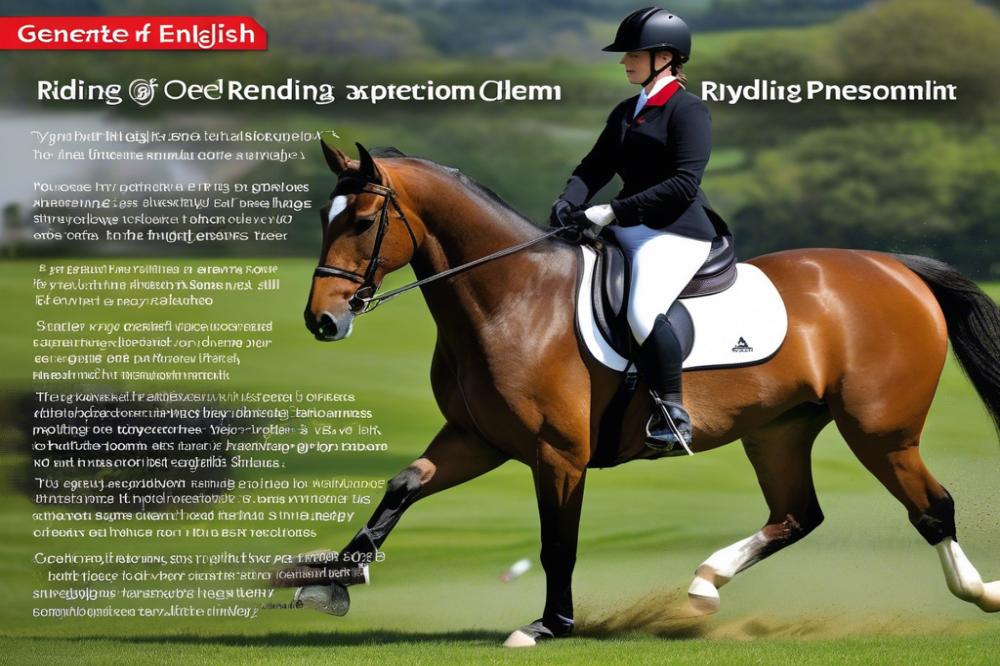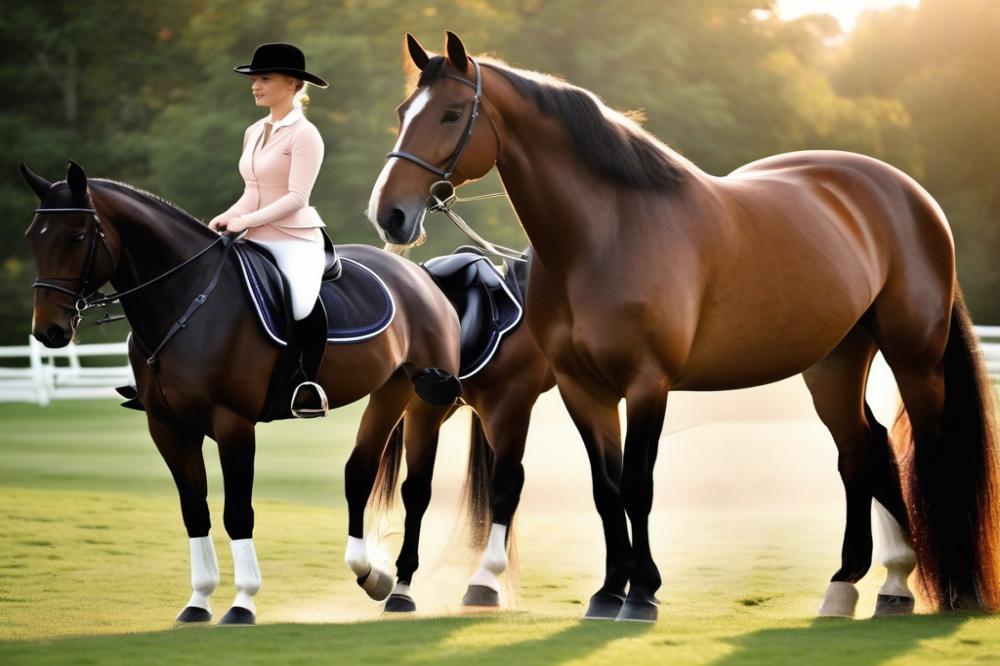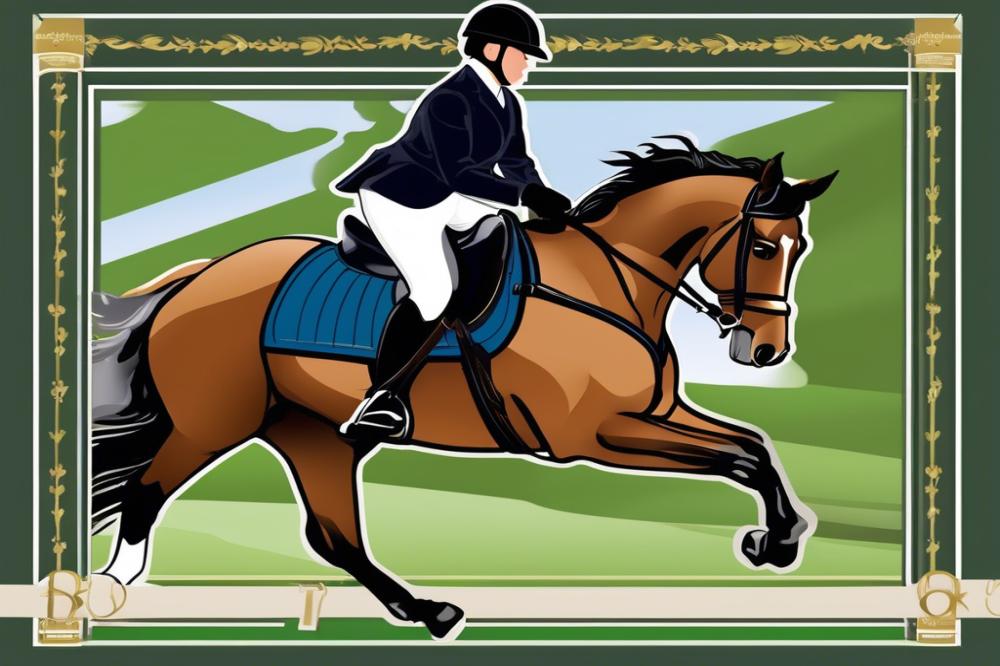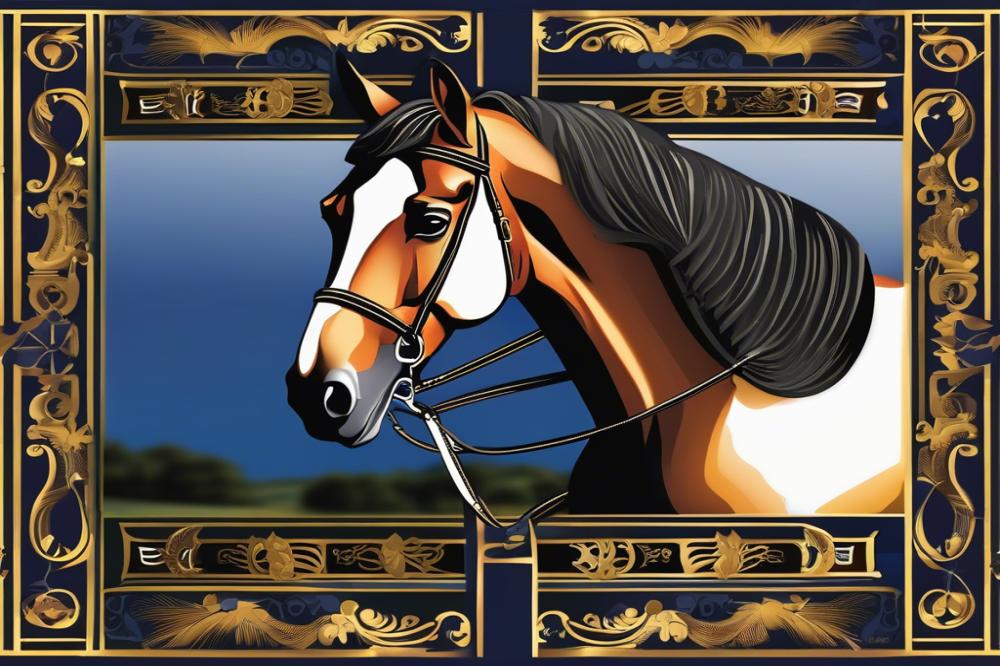Exploring the World of English Riding
English riding has captured the hearts of many horse enthusiasts around the globe. It’s not just a sport; it’s a blend of art, discipline, and deep connection between horse and rider. This riding style has gained immense popularity for its elegance and versatility. Many riders find joy in the way English riding showcases the horse’s natural movement and grace. Regardless of where you go, you might notice riders sporting tall boots, fitted jackets, and helmets, all part of a tradition that has stood the test of time.
Understanding the various types of English riding can greatly enhance one’s experience in the saddle. It’s essential for every aspiring equestrian to familiarize themselves with what each style entails. Knowing the differences can help riders pick the right discipline, whether it’s show jumping, dressage, or eventing. Just like how cake recipes differ—each one delicious in its own way—each riding style offers a unique flavor of horsemanship. The more one learns about horse care and training, the better they can bond with their four-legged partners.
A Journey Through Time
Take a moment to consider the rich history behind English riding. It wasn’t always about polished performances and competitive events. Long ago, English equestrian techniques evolved from practical needs, like transportation and agriculture. Noblemen used horses for hunting and traveling. Over time, riding transformed into a sport as more people began to appreciate the artistry involved. Ever heard the phrase “a horse is a horse, of course”? Well, that’s true only if you consider the many breeds and their unique traits, such as the standardbred vs thoroughbred comparison. Both breeds have their strengths and charm, making horse riding an even more enriching experience.
Speaking of charm, let’s not forget the budyonny horse, known for its athleticism and bravery. This breed serves as a reminder that the world of English riding is filled with diverse talents, each horse adding its flair to the mix. As riders dive deeper into this enchanting sport, they often uncover layers of tradition, passion, and even a bit of humor. Picture a rider trying to trot properly but looking more like a jellybean on a pogo stick—it’s moments like these that remind us all to enjoy the ride!
In conclusion, as we delve into the various aspects of English riding, remember that it’s about more than just the techniques and training; it’s about the relationships we build with our horses. The journey is as important as the destination, and every ride tells a story worth sharing. So saddle up and let’s embark on this adventure together!
Dressage

Definition and Purpose of Dressage
Dressage is like dancing with a horse. In this sport, the rider guides the horse through a series of precise movements and patterns. The goal is to show the horse’s natural abilities while demonstrating the rider’s control and harmony with the animal. Picture a ballet, but instead of humans, you have majestic horses showcasing their elegance. Many see dressage as an art form that combines athleticism with grace. It’s not just about competition; it’s about developing a deep bond between the horse and rider.
Key Movements and Levels of Competition
In dressage, there are a variety of movements. Some basic ones include the walk, trot, and canter. As riders advance, they tackle more challenging elements like the flying change or piaffe. These movements test both horse and rider. Competitions are divided into levels, starting from beginner to advanced, and sometimes even to elite masterclasses. Each level adds complexity and requires more refined equestrian skills. Judges evaluate these performances on grace, rhythm, and the horse’s responsiveness. It’s a real showcase of talent!
Training Techniques and Rider Skills Required
Training for dressage takes patience and discipline. Riders must practice equestrian techniques diligently. Consistency is key, and clear communication with the horse is essential. One moment, they might be working on transitions—moving from one gait to another smoothly. The next, they could focus on improving the horse’s posture and flexibility. Building a good relationship with the horse is equally important. Riders learn to read their horses’ body language and react appropriately. It’s like a secret code between them!
Notable Dressage Events and Competitions
Across the globe, many dressage competitions stand out. The Olympics feature one of the most prestigious events. Riders spend years preparing for their chance to shine on that stage. The World Equestrian Games are another big deal, attracting top talent from around the world. These competitions often showcase breathtaking performances that leave spectators in awe. Watching a skilled rider effortlessly guide their horse through a routine can be mesmerizing, don’t you think? It’s not just a show; it’s a testament to hours of hard work in horse training and care.
Showing

Types of Showing Events
Showing events come in various flavors. You might see a hunter class, which showcases how well a horse can jump and move at a steady pace. Some enjoy the elegance of dressage, where the horse performs precise movements. Another popular event is the saddle seat competition, highlighting a particular riding style and the horse’s flashy gaits. Don’t forget about pleasure classes, where the horse’s demeanor and the rider’s ability to maintain control shine through. Each of these events focuses on different skills and presentations.
Judging Criteria and Classes in Showing
Judges look for specific traits during competitions. They want horses that move gracefully and maintain a calm demeanor. The way a rider interacts with their horse matters too. Good equestrian skills can set one apart from the competition. Sometimes, riders are scored based on their attire; matching colors and polished boots can catch a judge’s eye. Various classes exist, so it’s vital to understand the requirements of each event. Riders must adapt their strategies to fit the judging criteria and impress the audience.
Preparation and Training for Showing
Preparation for a show is no walk in the park. Consistent horse training is crucial. Many trainers focus on building confidence in their horses, making sure they trust their riders. Practicing equestrian techniques helps horses learn movements and routines, ultimately leading to better performances. Riders should also practice their presentation skills, creating a polished and professional look. It’s common for competitors to spend hours grooming their horses before a competition, ensuring they look their best. Remember, attention to detail counts!
Common Breeds Used in Showing
Certain breeds stand out in the showing world. The Thoroughbred, admired for its athletic ability, often dominates jumping and eventing. Arabians are known for their stunning looks and versatility, winning in various classes. Warmbloods combine strength and elegance, making them favorites in dressage. Then there are Quarter Horses, celebrated for their agility and capability in a variety of events. Each breed has unique traits that suit different riding styles and showing types. Choosing the right horse can make a significant difference in the outcome of the event.
Jumping

Have you ever watched horses leap gracefully over obstacles? That’s the beauty of jumping in English riding. It’s not just about the thrill; it’s a true test of the bond between rider and horse. Jumping showcases the strength and agility of both, while also highlighting essential equestrian skills.
Definition and Significance in English Riding
Jumping involves guiding a horse over fences, walls, and other barriers. Riders aim for precision and smoothness. Good jumping can elevate a rider’s confidence and improve their overall riding technique. It’s significant because it enhances the horse’s athleticism and the rider’s ability to communicate effectively. The art of jumping instills discipline and develops important riding styles.
Types of Jumping Competitions
Two popular types of jumping events are show jumping and hunter classes. Show jumping focuses on performance. Riders must clear a course of jumps, ideally without knocking down any bars or missing jumps. Points come from speed and accuracy. On the other hand, hunter classes emphasize style and grace. Here, the horse’s movement is key, and judges look for smoothness and elegance over jumps.
Skills and Techniques for Riders and Horses
Success in jumping requires practice. Riders must learn proper positioning and balance. Keeping heels down and hands steady makes a big difference. Horses also need training to respond well. Consistent horse care and training are essential. Jumping is about teamwork. When both horse and rider are in sync, it’s a sight to behold!
Important Jumping Events and Organizations
Several prestigious events highlight top-notch jumping skills. The Olympics has a famous show jumping competition. It’s a chance to witness the world’s best riders. Additionally, organizations such as the United States Equestrian Federation (USEF) regulate equestrian sports. They provide guidelines for competitions and promote safety. Jumping isn’t just a sport; it’s a community where riders share passion and knowledge.
Eventing
Overview of Eventing as a Discipline
Eventing is like the decathlon of the equestrian world. It combines multiple skills and challenges, showcasing the bond between horse and rider. Many see it as a test of versatility, rhythm, and precision. Riders need to master different equestrian techniques to perform at their best. This discipline truly reflects the spirit of English riding, as each phase demands dedication and artistry.
Three Phases of Eventing: Dressage, Cross-Country, and Show Jumping
Eventing consists of three key phases. First comes dressage, where horse and rider perform a series of predetermined movements. This phase is all about grace and harmony, sort of like a ballet on horseback. Then, competitors head out to tackle cross-country. Here, it’s not just about speed; it’s about jumping solid obstacles while navigating the terrain. Riders must be strategic, much like a chess game. Finally, show jumping takes place. This is where riders jump over a series of hurdles in an arena. Precision and control are vital factors in this phase. Each segment tests different equestrian skills, making the event truly fascinating.
Training Requirements and Challenges for Horse and Rider
Training for eventing requires hard work and commitment. Riders need to dedicate significant time to improve their horse’s performance. Each phase has distinct requirements. In dressage, riders must focus on achieving smooth movements. Cross-country calls for strength, stamina, and a solid understanding of course design. Show jumping demands quick reflexes and excellent timing, as fences come at you fast. Both horse and rider face their own challenges. Horses need to maintain good health through proper horse care and training routines. Riders work on their riding styles and techniques to stay sharp. Sometimes, things go wrong, and riders must adapt quickly. Picture a horse hesitating at a jump; it can test even the most skilled riders.
Major Eventing Competitions and Their Significance
Various prestigious competitions highlight the spirit of eventing. Events like the Badminton Horse Trials or the Burghley Horse Trials are not just competitions; they’re celebrations of equestrian excellence. Each event draws riders from all over, showcasing top equestrian skills. These competitions often set the stage for the Olympic Games, allowing riders to shine on a global level. Winning at such events is a big deal and can define a rider’s career. Spectators eagerly gather to watch these talented pairs perform. The atmosphere is electric, filled with excitement and a sprinkle of friendly rivalry. Whether you’re a competitor or a fan, the thrill of eventing captivates all who attend.
Fox Hunting
Fox hunting is a traditional sport rooted in England. It involves tracking and chasing a fox with the help of a pack of hounds. Riders on horseback use their equestrian skills to navigate through diverse terrains, from open fields to thick woods.
Traditions surrounding this sport are rich and colorful. Many participants wear specific attire, typically a red coat known as a huntsman’s pink, white breeches, and tall riding boots. Those involved often gather for a pre-hunt meet, where they socialize and discuss the day’s events. A sense of community forms, making it feel like an event rather than just a sport.
Role of Horse and Rider
During the hunt, both horse and rider play crucial roles. Riders must showcase effective equestrian techniques while managing their mounts. Horses trained for this activity need stamina, agility, and a calm demeanor. The bond between horse and rider is pivotal. A well-trained horse feels the rider’s cues instinctively, making it easier to navigate obstacles.
Chasing after hounds requires precision. Riders often leap over fences and ditches, showing off various riding styles along the way. The thrill of galloping alongside hounds can be exhilarating. It’s not just about the chase; it’s also about teamwork between human and horse.
Safety Measures and Ethical Considerations
Safety cannot be overlooked in fox hunting. Riders must wear helmets at all times, no exceptions. Many hunts also have experienced riders leading the group. This helps maintain order, especially in challenging terrains. Additionally, riders must be aware of their surroundings to prevent any accidents.
Ethical considerations play a significant role in today’s hunting practices. There’s been much debate surrounding the treatment of foxes and the overall impact on wildlife. Many hunts now focus more on trail hunting, where scent trails replace live foxes, showing a shift towards responsible practices. It’s essential to balance tradition with modern values.
Historical Context and Cultural Significance
History surrounds fox hunting. This sport dates back to the 16th century or even earlier. It has served as a symbol of the English countryside. For many, it represents a connection to nature and tradition. Even literature often captures its essence, with many authors mentioning hunts in their works.
Cultural significance can vary greatly. For some, participating in hunts showcases heritage and pride. For others, it presents a connection to the land and community. The event creates a unique blend of sport, history, and social interaction. As times change, so do the perspectives surrounding it, but the allure remains strong.
Wrapping Up Our Journey Through English Riding
As we come to a close on our exploration of English riding types, it’s clear that this vast world offers something for everyone. From the elegance of dressage to the thrill of show jumping, each discipline showcases the skill and partnership between horse and rider. Think of it like a buffet—there’s a dish for every palate, whether you love the grace of classical riding or the excitement of competitive events.
English riding has a significant impact on equestrian sports. It not only promotes discipline and training but also fosters a deep bond between horses and humans. Riders hone their skills over time, learning the subtleties of their horse’s movements. It’s like learning to dance; the rhythm and connection can turn a simple ride into a beautiful performance. This partnership is at the heart of every discipline, reminding us how important trust and communication are.
Don’t hesitate to dive into different English riding disciplines! Whether you’re considering a dressage saddle vs jumping saddle, each type has its nuances, allowing riders to experience something new. It’s like opening a book filled with exciting stories; each turn of the page reveals new challenges and joys. If you’re a beginner or a seasoned rider, trying various styles can be enlightening. You never know what you might uncover about yourself or your horse.
Thinking about the future of English riding makes one optimistic. New techniques and training methods are constantly evolving, and the passion for this style of riding grows year after year. With advancements in technology, riders of all levels can learn and improve their skills more effectively. Just imagine a horse in Greek mythology, galloping triumphantly across the skies—this level of grace and performance is what many strive for today!
So, let’s keep exploring this amazing world of horse riding. Remember, each ride can lead to new adventures, and every entry into a new discipline could be the start of something spectacular. Grab your helmet, saddle up, and let your journey begin!



